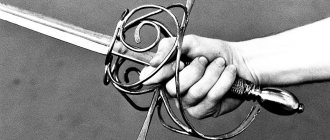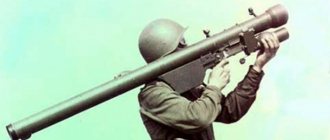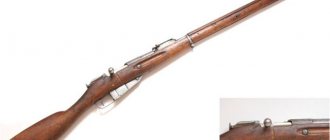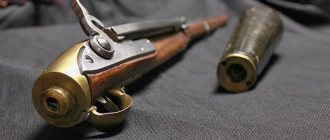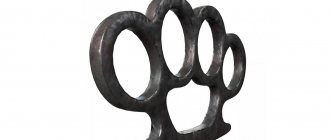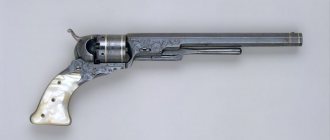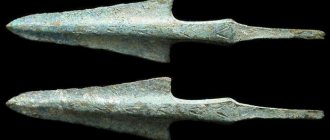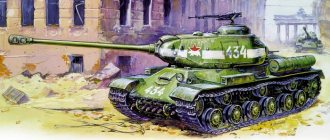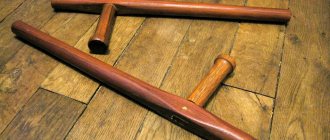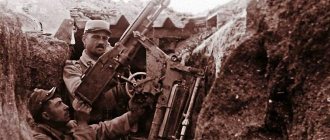Dear players!
Today we will talk about tank ammunition. The variety of types of shells presented in the game forces tankers to choose which shells to use.
Some shells are good for destroying enemy self-propelled guns and light tanks, while others are excellent at damaging heavy and medium tanks. In the World of Tanks, there are shells that are best used when firing from short and large-caliber guns, and there are shells that are better used when firing from long and small-caliber tank guns.
Shells in World of Tanks are also divided into ordinary and premium. Premium shells have increased performance and give an advantage in battle, but at the same time they are much more expensive than ordinary ones. The fan site of the game "World of Tanks", wotanks.com, hopes that the given descriptions of shells, the principles of their operation and our advice on the use of certain ammunition in various situations will help you increase your efficiency and effectiveness in battle.
Main types of projectiles
The main types include ordinary shells, purchased by players exclusively for silver currency, and “gold” shells, which can be purchased either for gold or silver. To purchase “gold” shells, silver is spent many times more. For example, if you buy a regular shell for the best T20 gun, it will cost 255 silver currency. It’s a different matter if you buy a “gold” sub-caliber projectile for silver, the cost of which will already be 4,400 silver (or 11 gold).
Previously, it was not possible to purchase “gold” shells with silver currency, so they were not so popular. They were used only in tournaments and clan wars, because shooting with real money in a random environment is a wasteful activity.
Model 1882 shells
Experimental steel shells for the Okhta test site were designed with a fair margin of safety and were not economically viable for mass production. Therefore, cast iron shells that were more modest in price and quality were accepted for production. In the factory markings they went under the indexes 12М1882Бл and 12М1882Фл.
| Armor-piercing hardened cast iron with two leading belts 3.8 kg of black powder 1.15% |
| High explosive ordinary cast iron, 2.8 klb 9 kg of gunpowder 2.7% |
Combat charge for a gun 12″/30 -121-123 kg of brown powder. Projectile speed - 570 m/s Combat charge for a 12″/35 gun - 153-154 kg of brown powder (at the beginning of the century 68.8 kg of smokeless powder.) Projectile speed - 637 m/s
Regular WoT projectiles
Conventional shells are: armor-piercing (AP, “bbeshki”), high-explosive fragmentation (HE, land mines) and sub-caliber.
Armor-piercing shells are the most common type in World of Tanks. Such shells are available to almost all vehicles, with the exception of self-propelled guns. The peculiarity of the BB is that damage is caused to the vehicle only when it is penetrated. The effectiveness of a projectile depends on the angle at which it hits the vehicle's armor - the sharper it is, the more armor it needs to pass through.
After the AP has penetrated the armor, it not only reduces the vehicle's HP, but can also damage modules that stand in the way of its penetration. If the angle of impact is too sharp, the likelihood of a ricochet increases.
BB normalization – 5 degrees. This term means turning the projectile to a more optimal angle, thereby reducing the reduced armor, and, on the contrary, increasing the probability of penetration.
High-explosive fragmentation shells are the second type of conventional shells. In most cases, they are used on self-propelled guns, however, it is also possible to fire such shells on ordinary tanks if you install a “high-explosive launcher”. It is a large-caliber weapon, usually installed on vehicles where there are either no APs, or their penetration is very low.
Land mines are distinguished by the fact that, having a small penetration, they cause a lot of damage. This is due to a completely different type of action. If AP shells are a point along the flight path of which damage is caused, then high-explosive fragmentation shells are an exploding shell that forms a sphere. It is this sphere that causes damage, often concusses the crew and can, albeit slightly, touch nearby vehicles.
Another important feature of high-explosive fragmentation shells is the absence of ricochet. There are situations when the enemy is barely visible and there is no chance of making a mistake by ricocheting a projectile. Whereas firing a HE shell will definitely give a positive result, although it will not cause as much damage as an armor-piercing shell.
Very often, high-explosive fragmentation shells are used to shoot down a specific module of equipment. For example, knocking down the tracks or a tank that plays “from the turret”, damaging the gun.
All tanks use sub-caliber shells as “gold” shells, with the exception of Tier X medium tanks, where sub-caliber shells are used instead of armor-piercing shells.
Creation of 8.8 cm KwK 36.
The new tank gun was created on the basis of an anti-aircraft gun that was in service with the troops.
And this was no accident. The 8.8 cm FlaK has already been successfully used in the fight against tanks, as well as firing at fortifications. German designers already had experience installing this interesting weapon in self-propelled guns using a half-track chassis - 8.8 auf Sd. Kfz. 8, ZgKw 12 t. However, installing a gun in an SPG and installing it in a tank are two different things. The difference between self-propelled guns and tanks lies in the method of mounting the gun. In Germany, a tank was considered an armored tracked vehicle with a gun placed in a rotating turret that could provide all-round fire. Self-propelled guns, on the contrary, are armed with a weapon with a limited horizontal firing angle.
The requirements for an anti-aircraft gun differ in many respects from the requirements for a gun for installation in a tank turret. It was necessary to reconsider the design of the gun, optimizing it for solving a different range of tasks and installing it on an armored chassis.
Therefore, based on the 8.8 cm FlaK, a specialized tank gun was designed, which was intended for use in the Porsche Tiger tank. The design features of this gun were determined precisely by the need to install it in a tank turret. This decision made it possible to create a tank gun in a short time to withstand the masses of the T-34 and KV.
And yet, the 8.8 cm KwK 36 was a temporary solution, which one would agree with is enough to compare its armor penetration with the cannon of the Panther tank; they are not much different. Already in November 1941, work began on designing its receiver - 8.8 cm KwK 43 L/71. The new gun had to be created by September 1942, and in two versions - a tank version and a version for self-propelled artillery.
"Gold" WoT shells
“Gold” shells, as already mentioned, are bought either for gold or for a large amount of silver currency. Naturally, their effect is stronger.
“Gold” shells include: cumulative (KS, “cumulative”), sub-caliber, “gold” high-explosive fragmentation and “gold” armor-piercing shells.
HEAT shells work on the principle of burning through the armor protection of vehicles with a jet of dense gas. Their penetration is much higher. So, for example, the AP shell of the T-34-2 of the Chinese nation with a 122 mm gun is 175 mm, and the cumulative shell is 300 mm. The difference is huge, but this effective projectile also has disadvantages:
- A ricochet is possible here, although it occurs less frequently than with armor-piercing shells.
- Screens significantly reduce the quality of penetration. Everything is justified here: a jet of gas first burns through the screen, then it flies for some distance just like that, and only then gets to the armor of the equipment.
- There is no normalization here.
The sub-caliber shells for all vehicles except the ST-10 are “gold” rounds. These are the most common “gold” shells among all others. This is explained by the fact that, although they are weaker than cumulative ones, they can be purchased for any equipment, while the ability to use cumulative ones is a great advantage.
If we compare sub-caliber shells with conventional armor-piercing shells, we can highlight several disadvantages:
- The armor penetration effectiveness of sub-caliber shells depends on the distance to the target. The further away the enemy's equipment is, the less effective these projectiles will be.
- Sabot rounds only have a 2-degree normalization, while AP rounds have a 5-degree normalization. Sub-caliber shells will have to penetrate more than the given tank armor.
“Gold” high-explosive fragmentation shells differ from conventional HE shells only in the diameter of the expansion “sphere”. Such shells are very useful for self-propelled guns, when you can shoot blindly to knock down a grapple, but still be effective.
The British ST-9 and ST-10 have special “gold” high-explosive fragmentation shells, which have the greatest penetration. This is a certain feature of British high-level STs.
“Gold” armor-piercing shells are extremely rare in the game. There are only a few machines that allow the purchase of such shells. One of them is the Tier VI tank destroyer of the Soviet nation SU-100Y. Gold armor-piercing shells have less penetration, but deal more damage.
Design features.
After the start of mass production of the Pz.Kpfw VI, the 88-mm tank gun was assigned the index 8.8 cm KwK 36. A total of 1,335 Tiger tanks armed with this gun were produced during production. The barrel length was 5.1 meters.
The tank version of the gun is equipped with a bolt with a vertical wedge, instead of the horizontal one, which was used in the anti-aircraft version of the gun. The barrel is equipped with a muzzle brake, which reduces the recoil length. The ballistics of the gun remained unchanged.
The length of the barrel has a significant impact both on the firing accuracy of a tank gun and will allow the projectile to gain greater speed, more fully imparting to it the energy of the powder gases. As is known, the ability to penetrate armor with a projectile is proportional to the square of its speed.
Since the tanks of the anti-Hitler coalition were armed with guns with relatively low initial projectile velocities, in terms of their accuracy and armor penetration they were significantly inferior to the Tiger tanks and the later Panther tank.
A distinctive feature of the 8.8 cm KwK 36 was the electric release, while the 8.8 cm FlaK had a shock release. The operating principles of the electric and mechanical release are different. With an electric release, the powder charge is ignited by an element heated by an electric current, while with a mechanical release, the firing pin breaks the capsule.
All German tanks of World War II were equipped with an electric trigger. The shot occurred after the gunner pressed a special button installed behind the vertical guidance flywheel. When the gun lock is open or not fully closed, the electric trigger is blocked. In case of a malfunction or if necessary, the blocking could be bypassed and the shot could be fired manually.
This method was resorted to in cases where the Tiger tank was unable to move and its towing was impossible. In this case, the liquid was drained from the recoil device and a shot was fired. This method was guaranteed to disable the weapon.
A special brass chute was attached to the breech, covered with a tarpaulin on top. After the shot, the spent cartridge case fell there and was sent out with a brass box with a capacity of 6 cartridges. The task of monitoring and emptying the box if necessary lay with the loader. At first he did this through a round hatch in the side of the tower. Quite quickly, this hatch was replaced with an evacuation hatch and the gunner’s task became more complicated; the cartridges had to be thrown out through the hatch in the roof, which was not easy.
The 8.8 cm KwK 36 barrel is equipped with a two-chamber muzzle brake. WHAT significantly reduced the recoil of the gun, reducing the size and necessary efficiency of recoil devices. But this solution also has a significant drawback: the diesel engine raises dust or snow from the ground and makes aiming and observation difficult. A barrel travel indicator was attached to the gutter during standard recoil.
Initially, the weapon was balanced by means of a compression spring. The spring was attached to the right of the gun in the front part of the turret; later it was moved behind the commander’s seat to the left side.
The recoil gun and the knurler were attached to the gun trunnions. The recoil devices of a tank gun are installed in a horizontal plane, while those of an anti-aircraft gun are installed in a vertical plane.
The task of recoil devices is to gradually absorb recoil energy, reducing dangerous loads on the components and mechanisms of the gun. Since the 8.8 cm KwK 36 had significant power and had to be placed in a limited space in the turret, the recoil devices had to be not only powerful, but also compact.
The anti-sinking devices of the tank gun of the Tiger tank are typical in design for German tanks of World War II. It consisted of:
- hydropneumatic knurler;
- hydraulic recoil brake.
The normal recoil of the Tiger tank's gun was about sixty centimeters.
Bottom line
There are many types of shells, but there is a fairly standard selection scheme. So, one tank allows the use of two or three types of shells, so you usually buy ordinary armor-piercing, ordinary high-explosive fragmentation and “gold” sub-caliber (or cumulative, if the vehicle allows it).
The bulk of the shots should come from conventional AP shells. “Gold ones” are used in extreme cases, when it is necessary to penetrate an armored tank head-on, because they are expensive. High-explosive fragmentation weapons are used just as rarely: during the shooting down of a grapple, when it is necessary to subtract at least one from the safety margin, when shooting at an opponent who is in the “reverse diamond” position.
Shells of the 1886 model (for 12″/35 guns)
They were a step forward in development due to the equipment of the St. Petersburg pyroxylin production with wet pyroxylin (c)[4]
| Steel armor-piercing 2.6 klb, charge 10 kg of pyroxylin 3.3% |
| High explosive ordinary cast iron, 3.2 klb 15.6 kg pyroxylin 4.7% |
Combat charge for a gun 12″/35 -153-154 kg of brown powder (at the beginning of the century 68.8 kg of smokeless powder.) Projectile speed - 637 m/s
Segmented projectile 1889
| Segmented projectile. 112 segments, each ~ 1.1 kg |

